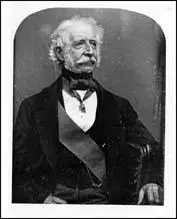|
Constable's
Photographic Portraits of Prince Albert and the Nobility
Constable had established his exclusive portrait studio in Brighton
at a time when the nobility and gentry were delaying their visits
to Brighton, restricting their period of stay at this fashionable
seaside resort to the months of November, December and January.
As Edmund M Gilbert commented in his study of Brighton and the growth
of the English seaside resort, the aristocracy found that “residence
in Brighton could be deferred until after the departure of the vulgarians”.
1 ,. ,.
Copy of a daguerreotype portrait
of Prince Albert [1842] Attributed to William Constable's
Photographic Institution. John Counsell, one of Constable's
assistants, claimed to have operated the camera when
Prince Albert sat for his portrait in Brighton on 7th
March, 1842.
|
The
Royal Family chose to visit Brighton even later in the season,
perhaps to avoid the fashionable visitors. Queen Victoria,
her consort Prince Albert, their two young children, Victoria
the Princess Royal and Albert Edward, the Prince of Wales
and members of Court took up residence at the Royal Pavilion
on 10th February 1842. On 25th February, George Anson, Prince
Albert’s Private Secretary, visited Constable’s
Photographic Institution on Marine Parade and had his portrait
taken. Just over a week later, on 5th March 1842, Prince
Albert himself, together with two German cousins, arrived
at Constable’s studio unannounced hoping to have their
portraits taken but, as Constable’s sister Mrs Susanna
Grece later recalled, the day was an "unlucky
one for portrait taking"
and the Prince and his cousins “like others this day
could not get a good picture”.
The
next day, Prince Albert’s German relatives Prince Ferdinand
of Saxe-Coburg and his two sons Prince Augustus and Prince
Leopold sat for their portraits and as later reported in
the Sussex Express “expressed their astonishment at
the rapidity of the process and the fidelity of the likenesses.”
Encouraged
by their response, Prince Albert called in at the Photographic
Institution on the afternoon of 7th March in order to be
photographed. According to the journal of Constable’s
sister, Susanna Grece, Prince Albert posed a number of times
that afternoon, but with limited success. “He had eight
pictures, not all good”. The successful daguerreotypes
were later photographed and two carbon prints have survived.
These two small portraits of Prince Albert, dated 1842 and
attributed to Constable, are believed to be the earliest
surviving photographs of a member of the Royal Family.
|
The
royal visit would have helped to establish William Constable’s
reputation as a photographer to the aristocracy and members of the
Court. Over the next ten years his sitters included the Duke of
Devonshire, the Marchioness of Donegal, Lord Cavendish and the Grand
Duchess of Parma. As Constable noted in 1848 “I have had many
sitters from the ranks that are called noble”.

A daguerreotype portrait of Sir Hugh
Gough taken in 1850 by an unknown photographer. Born in
1779, Gough fought with Wellington in the Napoleonic Wars.
|

A portrait miniature of a young officer
by the artist George Engleheart [1750-1829]. When Sir Hugh
Gough ( far left
) was an officer in Wellington's Army in the early
part of the 19th Century, a visit to a portrait painter was
the only way to secure a good likeness. By the time he was
in his early sixties, Gough, like other wealthy men, could
turn to a daguerreotype artist to make a small photographic
portrait.
|
CLICK HERE TO CONTINUEConstable's
Successful Photographic Studio
Website
last updated: 23 December, 2002
This
website is dedicated to the memory of Arthur T. Gill (1915-1987), Sussex
Photohistorian
|